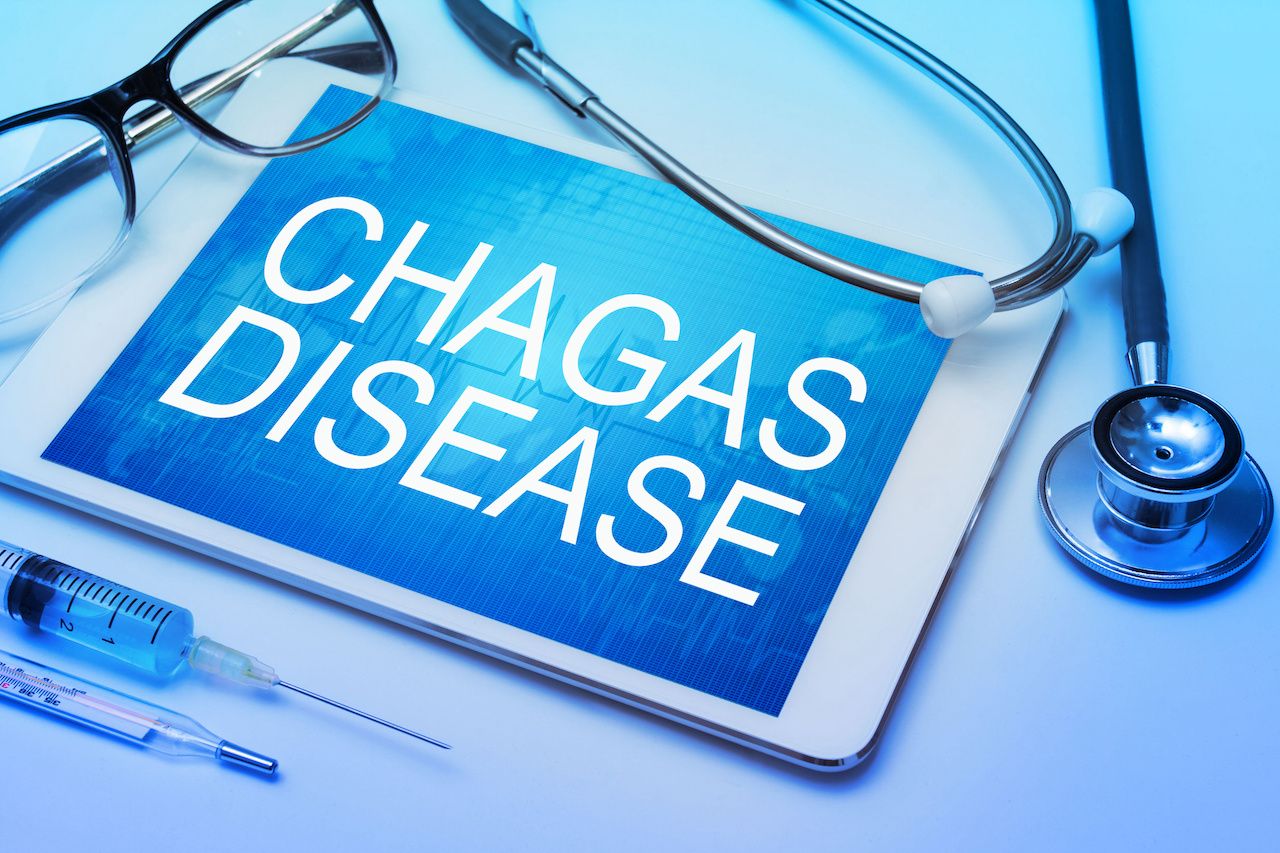Chagas Disease Associated With Gut Microbiota Changes
Chagas Disease Associated With Gut Microbiota Changes AJMC.com Managed Markets Network


A New Report on Gut Microbiota in Chagas Disease

A new report suggests the gut microbiota of people with chronic Chagas disease (CD) have structural characteristics that differ from the microbiota of healthy controls.
The report, which was published in PLOS Neglected Tropical Diseases,1 could help investigators better understand the disease and how to treat it.
Sustainable Development Goals (SDGs)
- Goal 3: Good Health and Well-being
- Goal 17: Partnerships for the Goals
The study authors said the parasitic disease is particularly problematic in South and Central America. A 2010 estimate found 6 million people were infected in 21 countries in which the disease is endemic. Twelve thousand deaths per year are attributed to the disease.
“Due to globalization and an increase in international migrations, Chagas disease has also become a cause of concern in nonendemic countries, where up to 347,000 and 123,078 persons are infected in the United States and Europe, respectively,” the authors wrote.
The disease can be transmitted in several ways. The most common route, the authors said, is contact with the urine or feces of a Trypanosoma cruzi–infected insect through mucus or nonintact skin. It can also be transmitted through organ transplants and blood, and congenitally.
The disease can manifest in multiple manners, the authors noted, with the most common manifestations involving the heart and digestive system. The latter seem to be related to the denervation of the enteric nervous system along the digestive tract, the authors noted.
“The exact mechanism of this denervation is still not entirely known, but immune mechanisms related to inflammation induced by the presence of the parasite may be involved,” they said.
Microbiota’s Role in Chagas Disease
- Parabacteroides spp
- Enterococcus hirae
- Lactobacillus buchneri
- Megamonas spp
One potentially important factor in digestive involvement of CD is the microbiota of the person affected. The precise make-up of a person’s microbiota can affect a parasite’s ability to colonize a host and persist within the host, they noted. Yet, they said, such questions have been largely ignored.
“Despite a strong rationale to expect an important role of the gut microbiota in Chagas disease establishment, clinical manifestations, and treatment response, the impact of the microbiota on this disease remains barely studied, perhaps because it represents a neglected disease according to WHO [World Health Organization],” the authors said.
They therefore sought to study the microbiota of people with CD and compare those results with analyses of healthy controls. They recruited eighty participants, 20 of whom were healthy controls, 16 of whom had cardiac CD, 15 of whom had digestive CD, and 29 of whom had CD with an indeterminate clinical manifestation. Seventy-two of the participants were of Bolivian descent, their median age was 47 years, and about half of the patients with CD had previously been treated with benznidazole, a nitroimidazole antimicrobial approved by the FDA for use among children aged 2 through 12 years.2
Stool samples were collected from each participant, and those samples underwent whole genome sequencing to analyze their fecal microbial community. Participants also underwent a comprehensive analysis of their diets to see if dietary factors might affect CD risk and outcomes. However, the dietary analysis revealed no substantial differences between the CD group and the control group.
The microbiota analysis, on the other hand, did reveal notable variance. The authors found that the presence or absence of CD was associated with 5% of the observed microbiota variability of the participants.
“Subjects with CD exhibited consistent enrichment of Parabacteroides spp, while for Enterococcus hirae, Lactobacillus buchneri, and Megamonas spp, the effect was less clear once [we] excluded the outliers values,” they reported.
Other factors, such as type of involvement and previous treatment, were not found to be associated with changes in microbiota structure.
The study investigators said their findings show that this type of research deserves more attention.
“Future studies could focus on better understanding the cause-effect relationship between human susceptibility to T cruzi infection, the progression of Chagas disease, and the response to parasiticidal treatments,” they wrote.
They said the potential rewards of better understanding the microbiota’s role in CD could be great, including possibly identifying targets that could improve patient outcomes.
References
- Pérez-Molina JA, Crespillo-Andújar C, Trigo E, et al. Chagas disease is related to structural changes of the gut microbiota in adults with chronic infection (TRIPOBIOME Study). PLoS Negl Trop Dis. Published online July 21, 2023. doi:10.1371/journal.pntd.0011490
- Benznidazole tablets. Exeltis.
SDGs, Targets, and Indicators
1. Which SDGs are addressed or connected to the issues highlighted in the article?
- SDG 3: Good Health and Well-being
- SDG 6: Clean Water and Sanitation
- SDG 10: Reduced Inequalities
- SDG 17: Partnerships for the Goals
The article discusses Chagas disease, a parasitic disease that affects the health and well-being of individuals, particularly in South and Central America. It also mentions the disease’s impact on non-endemic countries, highlighting the need for global partnerships to address the issue. Additionally, the transmission of the disease through contact with urine or feces emphasizes the importance of clean water and sanitation.
2. What specific targets under those SDGs can be identified based on the article’s content?
- SDG 3.3: By 2030, end the epidemics of AIDS, tuberculosis, malaria, and neglected tropical diseases and combat hepatitis, water-borne diseases, and other communicable diseases.
- SDG 6.1: By 2030, achieve universal and equitable access to safe and affordable drinking water for all.
- SDG 10.3: Ensure equal opportunity and reduce inequalities of outcome, including by eliminating discriminatory laws, policies, and practices and promoting appropriate legislation, policies, and action in this regard.
- SDG 17.17: Encourage and promote effective public, public-private, and civil society partnerships, building on the experience and resourcing strategies of partnerships.
The targets identified are directly related to the issues discussed in the article. Target 3.3 aims to end neglected tropical diseases, including Chagas disease. Target 6.1 focuses on providing safe drinking water, which is crucial for preventing the transmission of the disease. Target 10.3 addresses reducing inequalities in health outcomes, ensuring equal access to treatment and care. Target 17.17 emphasizes the importance of partnerships to address global health challenges.
3. Are there any indicators mentioned or implied in the article that can be used to measure progress towards the identified targets?
- Indicator for SDG 3.3: Prevalence of Chagas disease and its impact on affected populations.
- Indicator for SDG 6.1: Access to safe drinking water in endemic areas and non-endemic countries.
- Indicator for SDG 10.3: Equality in access to treatment and care for individuals with Chagas disease.
- Indicator for SDG 17.17: Number of partnerships and collaborations established to address Chagas disease.
The article mentions the prevalence of Chagas disease and its impact on affected populations, which can be used as an indicator for measuring progress towards SDG 3.3. Access to safe drinking water in endemic areas and non-endemic countries can be measured to track progress towards SDG 6.1. The equality in access to treatment and care for individuals with Chagas disease can serve as an indicator for SDG 10.3. The establishment of partnerships and collaborations to address Chagas disease can be measured to assess progress towards SDG 17.17.
4. Table: SDGs, Targets, and Indicators
SDGs Targets Indicators SDG 3: Good Health and Well-being 3.3: By 2030, end the epidemics of AIDS, tuberculosis, malaria, and neglected tropical diseases and combat hepatitis, water-borne diseases, and other communicable diseases. Prevalence of Chagas disease and its impact on affected populations. SDG 6: Clean Water and Sanitation 6.1: By 2030, achieve universal and equitable access to safe and affordable drinking water for all. Access to safe drinking water in endemic areas and non-endemic countries. SDG 10: Reduced Inequalities 10.3: Ensure equal opportunity and reduce inequalities of outcome, including by eliminating discriminatory laws, policies, and practices and promoting appropriate legislation, policies, and action in this regard. Equality in access to treatment and care for individuals with Chagas disease. SDG 17: Partnerships for the Goals 17.17: Encourage and promote effective public, public-private, and civil society partnerships, building on the experience and resourcing strategies of partnerships. Number of partnerships and collaborations established to address Chagas disease. The table presents the identified SDGs, their corresponding targets, and the specific indicators mentioned in the article. It provides a clear overview of how the article’s content relates to the Sustainable Development Goals.
Behold! This splendid article springs forth from the wellspring of knowledge, shaped by a wondrous proprietary AI technology that delved into a vast ocean of data, illuminating the path towards the Sustainable Development Goals. Remember that all rights are reserved by SDG Investors LLC, empowering us to champion progress together.
Source: ajmc.com

Join us, as fellow seekers of change, on a transformative journey at https://sdgtalks.ai/welcome, where you can become a member and actively contribute to shaping a brighter future.







